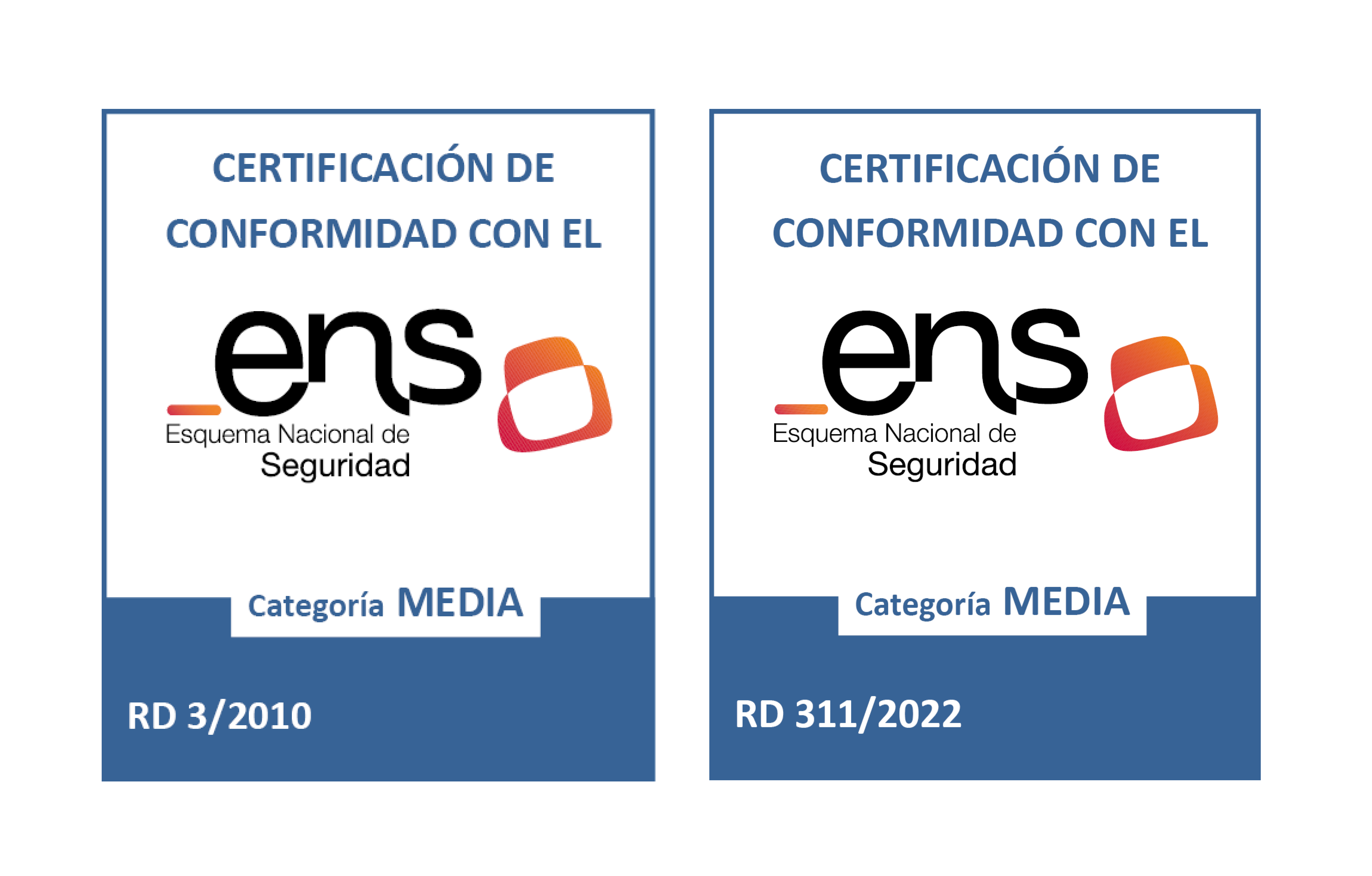To this end, management declares DEISTER’s commitment to:
⦿ Establish as the primary objective the services of the Axional Platform, with absolute respect for quality standards, preserving information, with special attention to the sensitivity of the personal data processed, with all necessary measures within its reach.
⦿ Apply the principle of continuous improvement to all organizational processes, with the additional goal of achieving the highest level of customer satisfaction.
⦿ Ensure compliance with applicable legal and regulatory requirements (particularly regarding the protection of personal data), as well as those voluntarily assumed by the organization in the development of Corporate Social Responsibility and in the Code of Conduct.
⦿ Promote participation, communication, information, and training of the professional team with the aim of making them feel part of the organization’s overall work.
⦿ Promote a sense of responsibility among team members in accordance with quality requirements, as well as those related to information privacy and security agreed upon internally and with clients, through appropriate and regular training and awareness actions.
⦿ Ensure business continuity by developing continuity plans in accordance with recognized methodologies.
⦿ Conduct and periodically review a risk analysis based on recognized methods that allow us to establish the level of both personal data privacy and overall information security, as well as that of ongoing projects and services, and minimize risks through the development of specific policies, technical solutions, and contractual agreements with specialized organizations.
⦿ Commitment to inform interested parties.
⦿ Selection of suppliers and subcontractors based on criteria related to information privacy and security.
⦿ Establish the consequences of violations of the security policy, which will be reflected in the contracts signed with interested parties, suppliers, and subcontractors.
⦿ Promote a culture of continuous improvement in information security management and implement improvements based on incident analysis, audits, and periodic reviews.
⦿ Ensure that access to and use of information systems is carried out securely and in accordance with established policies and procedures.
⦿ Properly manage the information lifecycle to avoid misuse during any of its phases.
⦿ Ensure the protection of intellectual property rights.
⦿ Periodically establish a set of objectives and indicators that allow management to adequately monitor the levels of service offered and management activities.
Specifically regarding the protection of personal data, DEISTER is committed to complying with the principles stated in the relevant legislation. These are:
⦿ Principle of “lawfulness, transparency, and fairness.” Data must be processed lawfully, fairly, and transparently for the data subject.
⦿ Principle of “purpose limitation.” Data must be processed for specific, explicit, and legitimate purposes, and it is prohibited for data collected for specific, explicit, and legitimate purposes to be subsequently processed in a manner incompatible with those purposes.
⦿ Principle of “data minimization.” Apply technical and organizational measures to ensure that only the data strictly necessary for each of the specific purposes of the processing are processed, reducing the extent of processing, limiting the retention period and accessibility to what is necessary.
⦿ Principle of “accuracy.” Implement reasonable measures to ensure that data is kept up to date, and that it is deleted or modified without delay when it is inaccurate in relation to the purposes for which it is processed.
⦿ Principle of “storage limitation.” Data retention must be limited over time to achieving the purposes pursued by the processing.
⦿ Principle of “security.” Conduct a risk analysis aimed at determining the necessary technical and organizational measures to ensure the integrity, availability, and confidentiality of the personal data being processed.
⦿ Principle of “accountability” or “demonstrated responsibility.” Maintain ongoing due diligence to protect and guarantee the rights and freedoms of natural persons whose data is processed, based on an analysis of the risks that the processing poses to those rights and freedoms, so that we can ensure and demonstrate that the processing complies with the provisions of the GDPR and LOPDGD.
⦿ Direct, support, and oversee the information security management system, as established in RD 311.2022 and subsequent amendments, as well as in ISO 27001, and strive to achieve its objectives.
DEISTER’s management commits to support and promote the principles established in this Policy and asks DEISTER’s staff to adopt and adhere to the provisions of the documented management system for the ENS.
